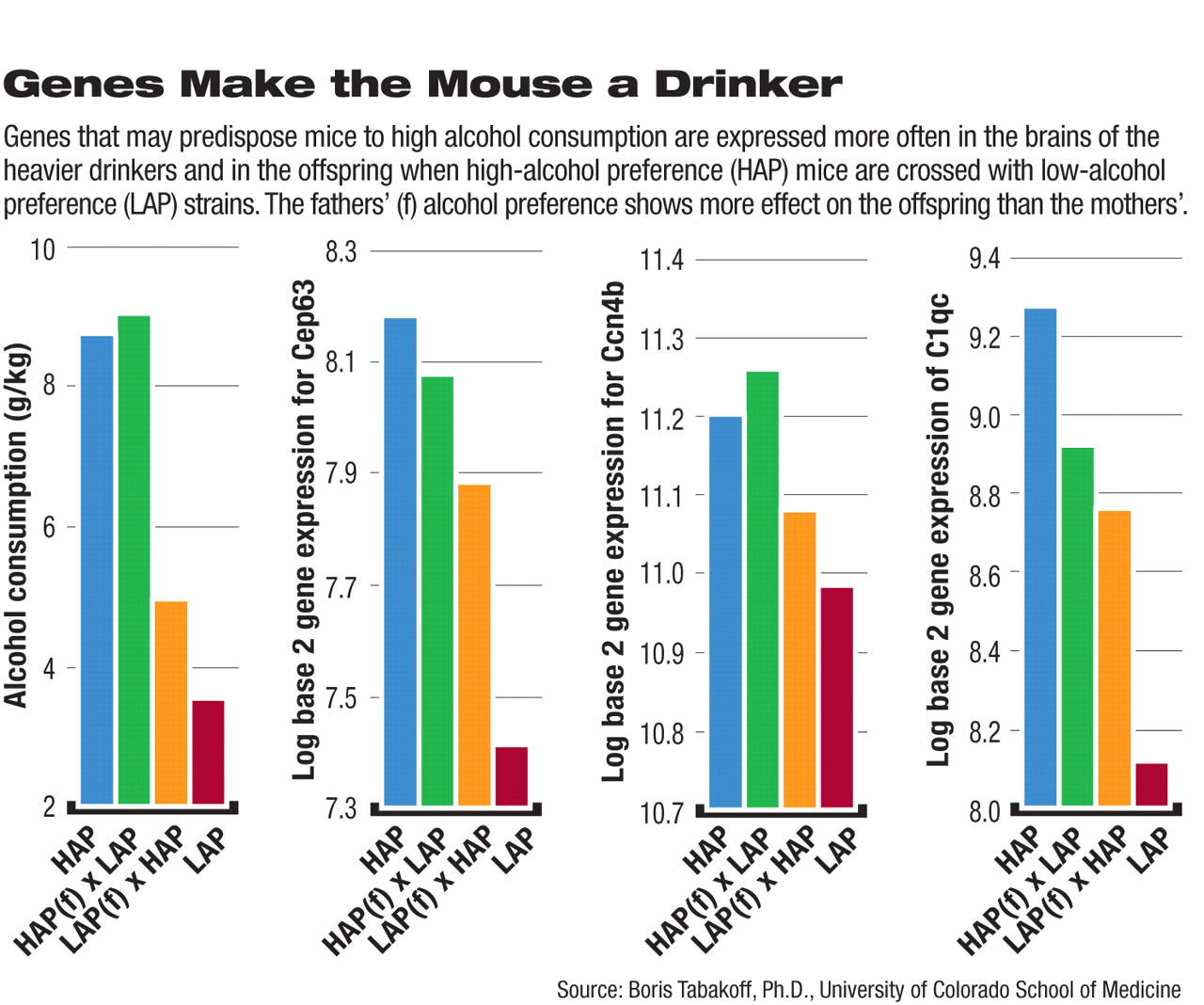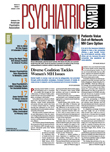Genes may lead alcoholics by the nose to drink, explained Boris Tabakoff, Ph.D., to an audience at the National Institutes of Health.
Tabakoff and his colleagues have identified genes expressed in the olfactory system that appear to predispose mice—and possibly humans—to high alcohol consumption even before they ever sniff alcohol, he explained in the annual Mark Keller Honorary Lecture at the National Institute on Alcohol Abuse and Alcoholism in Bethesda, Md., in October 2007.
“The big question is why do some people who drink a lot get into a state where they can't control their drinking as the rest of us do?” said Tabakoff, professor and chair of the Department of Pharmacology at the University of Colorado School of Medicine. He has studied the chemistry underlying alcohol preference for over three decades. More recently, he and his colleagues have explored the complex polygenic factors that predispose preference for alcohol by looking at gene products in the brain.
He noted four stages in alcohol consumption: a first experience; social drinking within a “normal” context such as dining; drinking as a response to the stress of major life events; and alcohol-dependent drinking, in which alcohol intake is elevated and is uncontrolled by the brain's cortical areas.
Tabakoff's research ties analogous drinking patterns in mice to gene expression in their brains, especially in the olfactory areas.
The sense of smell and a penchant for drinking have been linked by previous researchers, said Tabakoff. A whiff of the grain or grape has been shown to trigger not only a subjective desire to drink but also autonomic responses such as increased salivation and higher blood pressure. Furthermore, drugs used to treat alcoholism, naltrexone, for example, have also been shown to affect the olfactory system.
Tabakoff's most recent research makes use of quantitative trait loci analysis, a statistical tool that identifies areas of the genome associated with a phenotype of interest. His work has narrowed thousand of possible genes down to eight candidates for alcohol preference in the mouse. Imaging combined with brain mapping can pin down where the genes are expressed in the brain.
“We assume that the gene products interact to produce phenotypes,” he said. “If the gene products are located in the same part of the brain, then we can ask whether they form an interactive pathway related to neural function and phenotype.”
The products of four of the candidate genes Tabakoff is studying help determine the architecture of the brain by promoting neuron survival, neurite growth, and cell migration. Several show greater expression in the olfactory bulb, the olfactory tubercle, the nucleus accumbens, and the habenula. These gene products operate to create new connections between neurons in the olfactory system and those in areas involved in emotional context and memory, he said.
He crossbred two strains of mice—one that drank a lot of alcohol and one that drank very little—to test three genes. Two of the genes (complement protein C1qc and centrosomal protein 63 [Cep63]) interacted in forming synapses and anchoring sites on neurons in part of the glutamate system. The third (sodium channel accessory protein 4b [Ccn4b]) supported the neuron's ability to fire rapidly and was involved in processes that convert stimuli to memory events.
“Different gene expression in the olfactory system, the limbic system, and the links between them reflect differences in the propensity for alcohol consumption in mice,” he said.
Together, they linked inputs from the olfactory system to areas of emotionality and the sense of intensity in the limbic system and then to the hippocampus and amygdala for transformation into memories, he said. “So the smell and its emotional valence are transformed into emotional memories.”
The prefrontal cortex controls the individual's responses to a stimulus, such as the smell of an alcoholic drink. Ordinarily, the cortex can exercise executive function and consciously tell the individual to drink or not. But in alcoholics, the prefrontal cortex loses its ability to control behavior, turning drinking from a voluntary to a reflex action. The act of drinking can take place without a system that says 'This is not the right time or place to do it,' ” he said.
The gene expression patterns don't automatically turn mice (or people) into alcoholics, but they do seem to predispose them to alcohol consumption even before they are exposed to the drink. Once they've had a taste of alcohol, however, the smell “is an important cue that promotes the desire to drink in both humans and animals,” he said.
“Animals exposed to alcohol start drinking,” he concluded.“ They end up drinking at different levels, and the genes we've studied are important for [determining] these drinking levels. Most don't become dependent, but for others, the more they drink, the more likely they are to become dependent on alcohol. Both genes and quantity matter.”
Disconnecting olfaction and drinking might serve as one test of this research. There is little published information on alcoholism in people who have lost their sense of smell, but as mice age and their olfactory powers decline, they do tend to drink less, said Tabakoff. He and his collaborators will further explore that issue by chemically knocking out the mice's ability to smell and seeing if it alters their drinking behavior.
An abstract of Tabakoff's lecture, “Why Mice, Rats and Some Humans Drink Alcohol: A Neurobiologic/Genomics Perspective,” is posted at<www.niaaa.nih.gov/NewsEvents/Conferences/KellerAbstract07.htm>.▪

